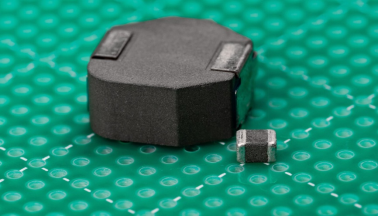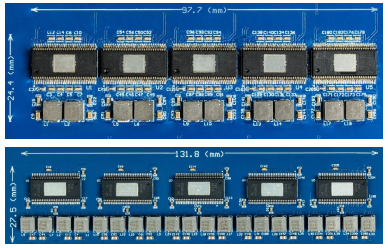Today's car audio systems are much more complex than the vacuum tube-powered amplifiers used in early single-speaker car radios. Some newer cars have two dozen or more speakers throughout the car. From early systems to today's immersive high-quality sound systems, the key is to provide better sound for the vehicle. It covers four design trends: size, weight, cost and sound quality, which are well known in the car audio market. However, the real challenge is to reduce the size and cost of the solution while maintaining high quality sound performance.

Driving further development of audio amplifier design
For years, car audio systems have used Class AB audio amplifiers to deliver sound to car speakers. Over the past few years there has been a trend to switch from Class AB amplifiers to Class D amplifiers. Class D amplifiers help designers achieve their goals of improved efficiency, reduced heat dissipation requirements, and reduced system weight.
Design engineers familiar with Class D automotive amplifiers know that each audio channel requires two inductor-to-capacitor (LC) filters to filter out high-frequency switching noise. To reduce the size of LC filters, Texas Instruments (TI) has developed audio amplifiers that support switching frequencies up to 2.1MHz, allowing the inductor to significantly reduce size and cost. Figure 1 compares the size evolution of inductors from 400kHz to 2.1MHz.

Figure 1: Size comparison of an 8.2µH inductor (400kHz) and a subminiature 3.3µH inductor (2.1MHz)
Today, TI has taken a new step by incorporating TI's proprietary single inductor (1L) modulation technology in audio amplifiers to further reduce the LC filter size. This technology reduces the number of inductors per channel by half while maintaining Class D performance, resulting in a 50% reduction in inductor cost and a 50% reduction in solution size and weight. The resulting benefits include simplified audio design and greater efficiency.
Practical application of 1L modulation technology
TI's 1L modulation technology halves the number of inductors in LC filters. Now suppose an automaker's vehicle lineup includes a premium model whose sound system requires 32 audio channels. Each audio channel has a speaker, and each speaker has two connectors: positive and negative. For amplifiers that support only BD or single-side pulse width (1SPW) modulation, each lead requires an LC filter for a total of 64 inductors. For 1L modulated amplifiers, only one LC filter is required per audio channel, so the number of inductors is reduced to 32.
Figure 2 shows how an amplifier using 1L modulation reduces the number of inductors in a 20-channel sound system to 10 channels, resulting in a 34% reduction in size.

Figure 2: A 20-channel car audio system design using five TAS6754-Q1 Class D amplifiers compared to TI's TAS6424E-Q1 Class D amplifiers
The system architect was obviously concerned about the difficulty of implementing this amplifier. TI's 1L modulation technology is designed to be seamlessly integrated into the system. With 1L modulation technology, TI has developed a modulation scheme suitable for amplifiers that allows designers to get all the benefits without major design challenges, while still maintaining high-quality Class D audio performance.
The TAS6754-Q1 audio amplifier includes real-time load diagnosis, current detection per channel and up to 19V operating voltage for safe operation and higher performance. Whether or not audio is playing, real-time load diagnosis tracks load conditions such as open load, short load, power short and ground short. This feature ensures that the amplifier is working properly and provides a safe and reliable listening experience.
Another notable feature is the low latency path option. If the system requires active noise cancellation or road noise cancellation, the TAS6754-Q1 enables full-featured low-latency audio to quickly respond to injected audio signals.
Conclusion
Texas Instruments' 1L modulation technology enables users to create smaller, lighter designs at a lower cost, while focusing more on the car audio experience and constantly pushing the design limits.
Other resources
• Order the TAS6754 Evaluation Module (TAS6754Q1EVM).
• Learn about Texas Instruments' full range of end-to-end audio solutions, including amplifiers, processors, converters and switches.
免责声明: 本文章转自其它平台,并不代表本站观点及立场。若有侵权或异议,请联系我们删除。谢谢! Disclaimer: This article is reproduced from other platforms and does not represent the views or positions of this website. If there is any infringement or objection, please contact us to delete it. thank you! |


